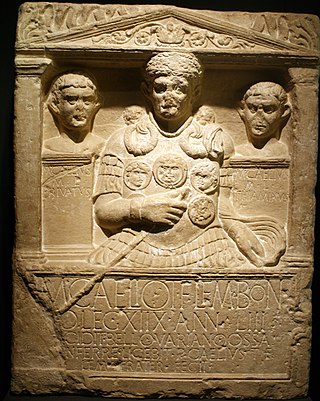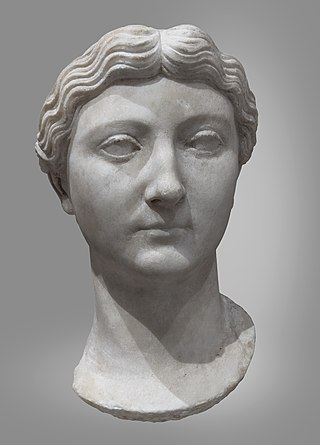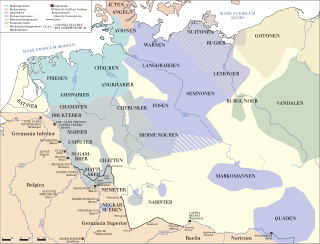Secondary Sources
- Wolfram, Herwig (1990). The Roman Empire and its Germanic peoples. University of California Press. p. 41. ISBN 0-5200-6983-8 . Retrieved 30 October 2012.
Catualda (flourished in 1st century AD) was a Marcomannic exile who deposed the Marcomannic king Maroboduus in 18 AD.
Catualda is mentioned in The Annals of the Roman historian Tacitus. Following the Battle of the Teutoburg Forest, while Germanicus was avenging Rome beyond the Rhine, Drusus attempted to divide and conquer the tribes within the vast realm of the Marcomannic ruler Maroboduus. Drusus established relations with Catualda, a young Marcomannic noble living in exile among the Gutones. After the weakening of Maroboduus following the previous invasion of Bohemia by Arminius, Catualda returned with a "strong force" in 18 AD, and having "corruptly won over the nobles", entered the palace and deposed Maroboduus. In an adjacent fortress, Catualda "found the long-accumulated plunder of the Suevi and camp followers and traders from our provinces who had been attracted to an enemy's land, each from their various homes, first by the freedom of commerce, next by the desire of amassing wealth, finally by forgetfulness of their fatherland." [1]
Catualda was however soon defeated by the "overwhelming strength" of Vibilius of the Hermunduri, and was like Maroboduus, forced to seek refuge in the Roman Empire. He was thus settled in Forum Julii (Fréjus) in Gallia Narbonensis. [2] The Marcomanni were subsequently ruled by the Quadian client king Vannius, who was himself also deposed by Vibilius in coordination with own nephews. [3] [4]

The Marcomanni were a Germanic people that established a powerful kingdom north of the Danube, somewhere near modern Bohemia, during the peak of power of the nearby Roman Empire. According to Tacitus and Strabo, they were Suebian.
Maroboduus was a king of the Marcomanni, who were a Germanic Suebian people. He spent part of his youth in Rome, and returning, found his people under pressure from invasions by the Roman empire between the Rhine and Elbe. He led them into the forests of Bohemia, near to the Quadi who already lived nearby, and established a large alliance.

The Suebi were a large group of Germanic peoples originally from the Elbe river region in what is now Germany and the Czech Republic. In the early Roman era they included many peoples with their own names such as the Marcomanni, Quadi, Hermunduri, Semnones, and Lombards. New groupings formed later, such as the Alamanni and Bavarians, and two kingdoms in the Migration Period were simply referred to as Suebian.

The 10s decade ran from January 1, AD 10, to December 31, AD 19.

The Battle of the Teutoburg Forest, described as the Varian Disaster by Roman historians, took place at modern Kalkriese in AD 9, when an alliance of Germanic peoples ambushed Roman legions and their auxiliaries, led by Publius Quinctilius Varus. The alliance was led by Arminius, a Germanic officer of Varus's auxilia. Arminius had acquired Roman citizenship and had received a Roman military education, which enabled him to deceive the Roman commander methodically and anticipate the Roman army's tactical responses.

Livia Drusilla was Roman empress from 27 BC to AD 14 as the wife of emperor Augustus. She was known as Julia Augusta after her formal adoption into the Julian family in AD 14.

The Quadi were a Germanic people who lived approximately in the area of modern Moravia in the time of the Roman Empire. The only surviving contemporary reports about the Germanic tribe are those of the Romans, whose empire had its border on the River Danube just to the south of the Quadi. They associated the Quadi with their neighbours the Marcomanni, and described both groups as having entered the region after the Celtic Boii had left it deserted. The Quadi may later have contributed to the "Suebian" group who crossed the Rhine with the Vandals and Alans in the 406 Crossing of the Rhine, and later founded a kingdom in northwestern Iberia.

Lucius Aelius Sejanus, commonly known as Sejanus, was a Roman soldier, friend and confidant of the Roman Emperor Tiberius. Of the Equites class by birth, Sejanus rose to power as prefect of the Praetorian Guard, of which he was commander from AD 14 until his execution for treason in AD 31.

The Lugii were a large tribal confederation mentioned by Roman authors living in ca. 100 BC–300 AD in Central Europe, north of the Sudetes mountains in the basin of upper Oder and Vistula rivers, covering most of modern southern and middle Poland.

Drusus Julius Caesar was the son of Emperor Tiberius, and heir to the Roman Empire following the death of his adoptive brother Germanicus in AD 19.

Drusus Caesar was the adopted grandson and heir of the Roman emperor Tiberius, alongside his brother Nero. Born into the prominent Julio-Claudian dynasty, Drusus was the son of Tiberius' general and heir, Germanicus. After the deaths of his father and of Tiberius' son, Drusus the Younger, Drusus and his brother Nero Caesar were adopted together by Tiberius in September AD 23. As a result of being heirs of the emperor, he and his brother enjoyed accelerated political careers.

The Hermunduri, Hermanduri, Hermunduli, Hermonduri, or Hermonduli were an ancient Germanic tribe, who occupied an inland area near the source of the Elbe river, around what is now Bohemia from the first to the third century, though they have also been speculatively associate with Thuringia further north. According to an old proposal based on the similarty of the names, the Thuringii may have been the descendants of the Hermunduri. At times, they apparently moved to the Danube frontier with Rome. Claudius Ptolemy mentions neither tribe in his geography but instead the Teuriochaemae, who may also be connected to both.

Nero Julius Caesar was the adopted grandson and heir of the Roman Emperor Tiberius, alongside his brother Drusus. Born into the prominent Julio-Claudian dynasty, Nero was the son of Tiberius' general and heir, Germanicus. After the deaths of his father and of Tiberius' son, Drusus the Younger, Nero and his brother Drusus were adopted together by Tiberius in September AD 23. As a result of being heirs of the emperor, he and his brother enjoyed accelerated political careers.

This is a chronology of warfare between the Romans and various Germanic peoples between 113 BC and 476. The nature of these wars varied through time between Roman conquest, Germanic uprisings and later Germanic invasions of the Western Roman Empire that started in the late second century BC. The series of conflicts was one factor which led to the ultimate downfall of the Western Roman Empire in particular and ancient Rome in general in 476.
The Gutones were a Germanic people who were reported by Roman era writers in the 1st and 2nd centuries to have lived in what is now Poland. The most accurate description of their location, by the geographer Ptolemy, placed them east of the Vistula river.
Vainius was the king of the Germanic tribe Quadi.

Vibilius or Vibillius was a powerful king of the Hermunduri in the 1st century AD, mentioned in The Annals of the Roman historian Tacitus. According to Tacitus, Vibilius deposed the Marcomannic king Catualda, who had himself deposed Maroboduus in 18 AD. Catualda was subsequently succeeded by the Quadian client king Vannius. In 50 AD however, along with Vannius' nephews Vangio and Sido and allied Lugii, Vibilius also in turn led the deposition of Vannius.
Vangio and Sido were two Quadian brothers who were the co-rulers of a Roman client kingdom in Bohemia in the 1st century AD.

The Roman campaigns in Germania were a series of conflicts between the Germanic tribes and the Roman Empire. Tensions between the Germanic tribes and the Romans began as early as 17/16 BC with the Clades Lolliana, where the 5th Legion under Marcus Lollius was defeated by the tribes Sicambri, Usipetes, and Tencteri. Roman Emperor Augustus responded by rapidly developing military infrastructure across Gaul. His general, Nero Claudius Drusus, began building forts along the Rhine in 13 BC and launched a retaliatory campaign across the Rhine in 12 BC.
Segimer or Sigimer was a chieftain of the Germanic Cherusci tribe. He is chiefly remembered as the father of Arminius, who led the Germans to victory over the Romans at Teutoburg Forest in AD 9.